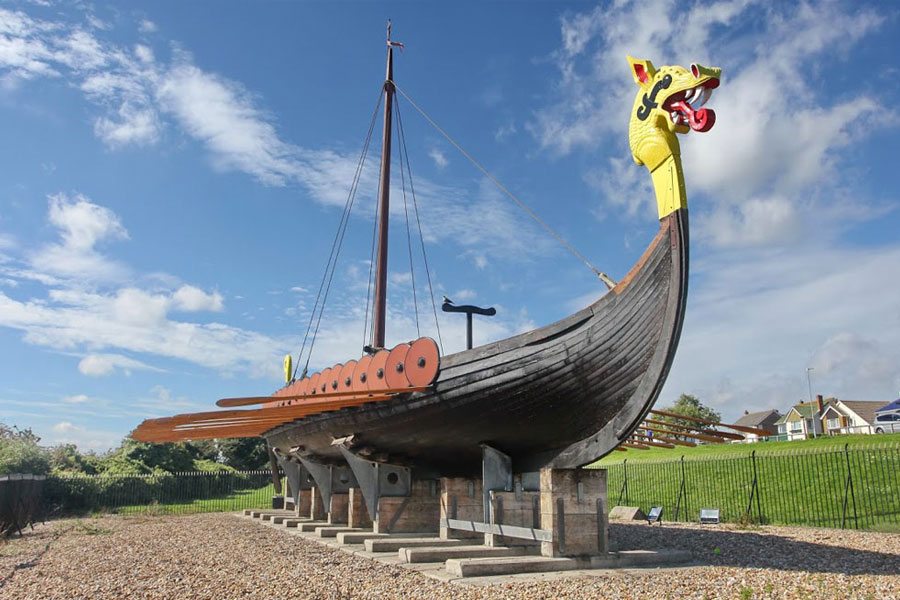
Is Ramsgate the centre of UK Heritage?
9 May 2019
Ramsgate is steeped in cultural heritage. World-renowned authors, artists and architects such as Jane Austen, Wilkie Collins, Samuel Taylor Coleridge, Mary Townley, Vincent Van Gogh, Karl Marx and Augustus and Edward Pugin have all lived and thrived in Ramsgate.
Ramsgate is steeped in cultural heritage. World-renowned authors, artists and architects such as Jane Austen, Wilkie Collins, Samuel Taylor Coleridge, Mary Townley, Vincent Van Gogh, Karl Marx and Augustus and Edward Pugin have all lived and thrived in Ramsgate.
The Romans, Vikings and birth of Christianity in the UK all arrived via Ramsgate. It was a favourite retreat of both Queen Victoria and King George IV, and the town played significant roles in both the Napoleonic Wars and the Evacuation from Dunkirk.
But, ask any random sample of the UK population to name the place that has had the most significant impact on UK society, and you can be assured that Ramsgate won’t feature highly.
Lured by recent history, most may think of the Capital. Those with a northern perspective might point to the industrial revolution heartlands of Manchester, Bradford or Leeds. Others may think of major ports like Glasgow, Liverpool, Dundee or Southampton. Yet Ramsgate, can lay a greater claim than most, to have been the gateway to some of the most significant influences on the UK’s culture.
Most recently in the national eye as the embarkation point for the doomed Brexit ferry company with no ships, Ramsgate has a more proud and much less well known claim to nautical and cultural heritage.
Phoenician traders from Cadiz and Carthage established a stronghold on Thanet [likely to have been just outside Ramsgate] and this is part of the first reference to modern Britain in literature by Ptolemy in his Georgraphica c. 150 AD. The Romans recognised its great strategic value- when Julius Cesar landed here in BC 54 & 55 BC forcing the British warlord Cassivellaunus to surrender to Rome. Cesar’s Fort at nearby Richborough still survives today. Later, Emperor Claudius commenced his invasion of the UK via Ramsgate’s Pegwell Bay in AD 43.
The next major conquest of Britain took place in AD 449 by the Vikings- Hengist and Horsa. They also arrived in the Ramsgate hamlet of Ebbslfeet, and whilst initially acting as the King Vortigern’s mercenaries in his fight against the Picts and the Gaels, they later turned against him. Whilst Horsa was killed in battle, Hengist went on to rule and is possibly the Hengest referred to in the Finnesburg Fragment and Beowulf- one of the most important pieces of work in English literature.
St. Augustine’s arrival at Ebbsfleet, Ramsgate in A.D. 597 is one of the most important events in the history of UK. Having quickly converted King Ethelbert he established the Christian religion in England, became the first Archbishop of Canterbury and re-established England’s cultural contact with the continent. The site reputed to be the place where King Ethelbert first met Augustine is commemorated by St Augustine’s cross and can still be visited today.
In the 18th and 19th centuries Ramsgate became one of the UK’s great resorts. King George IV loved it so much he decreed that Ramsgate was to be a Royal Harbour and it still the only port in the UK to hold this honour. Visitors can stay in the hotel previously frequented by Queen Victoria overlooking the harbour which also includes some of the famous Dunkirk little ships. Despite a decline from its heyday, Ramsgate’s tourism is once again thriving.
Ramsgate is now in the top 8% of conservation areas with creative industries across the UK and is one of the cultural production areas in the Thames Estuary Production Corridor.
It is the site of one of the UK’s first Heritage Action Zones and is one of the East Kent hubs for the £1.5M Pioneering Places scheme that will develop heritage and civic pride and connect artists and communities. These days, cultural highlights include the UK’s favourite small music venue, performance and installation art and numerous festivals.
Heritage Lab CIC was established in 2018 to regenerate historic buildings and community assets in order to make more space available to the creative sector and community. Thanks to a grant from the national lottery funded Arts Council England and support from Locate in Kent we are now in a position to determine to plan how to support the creative sector over the next 5 years.